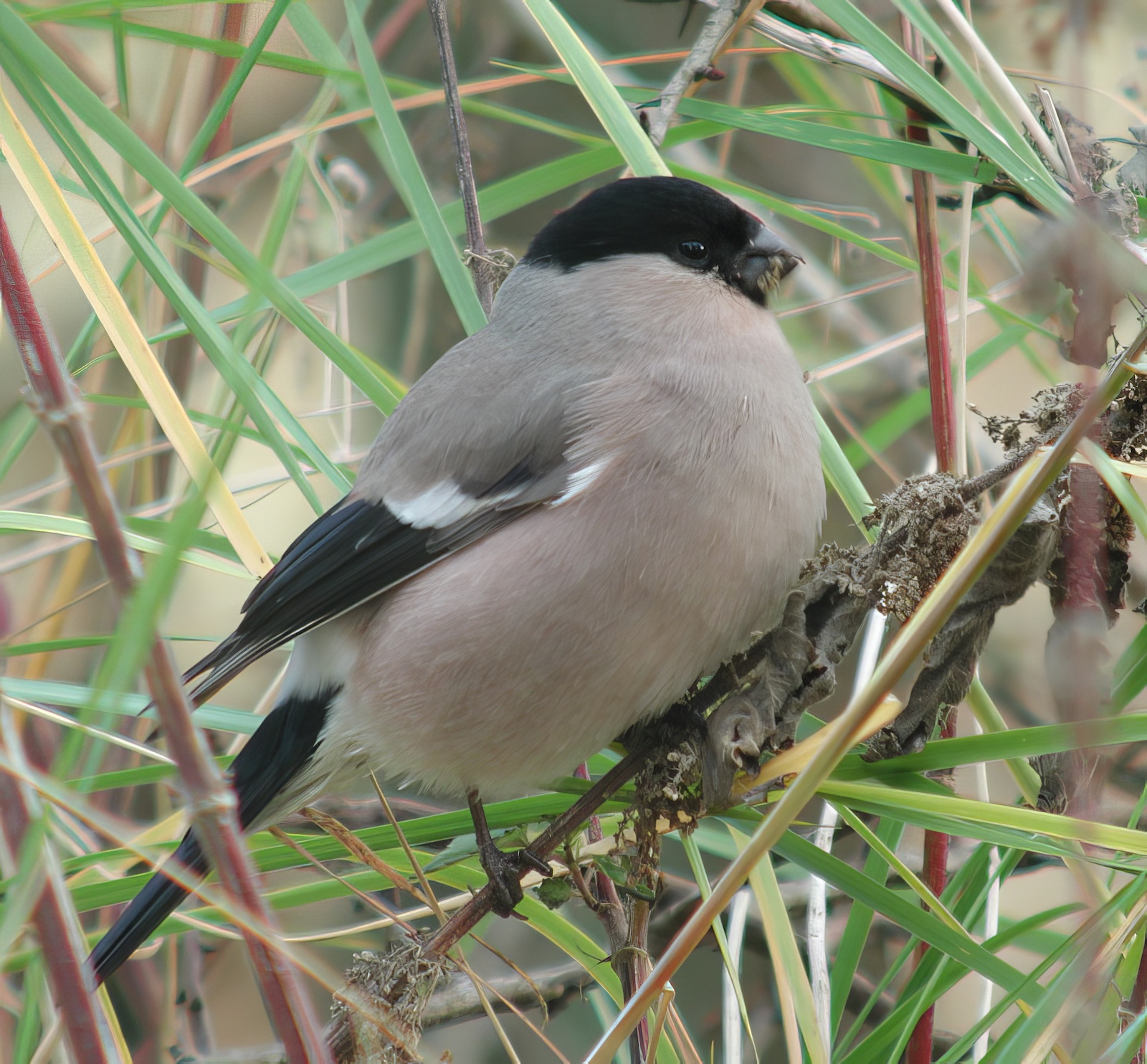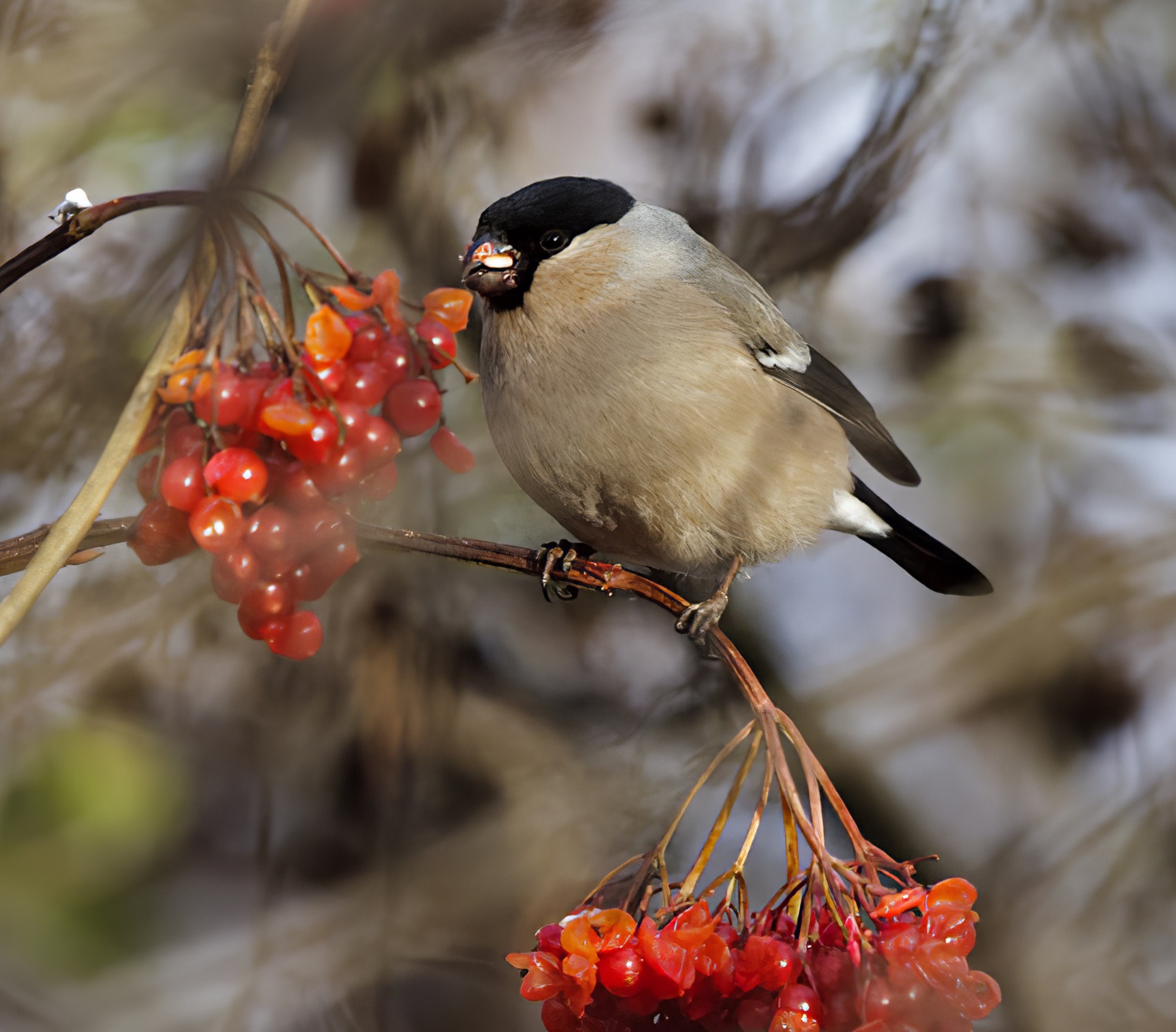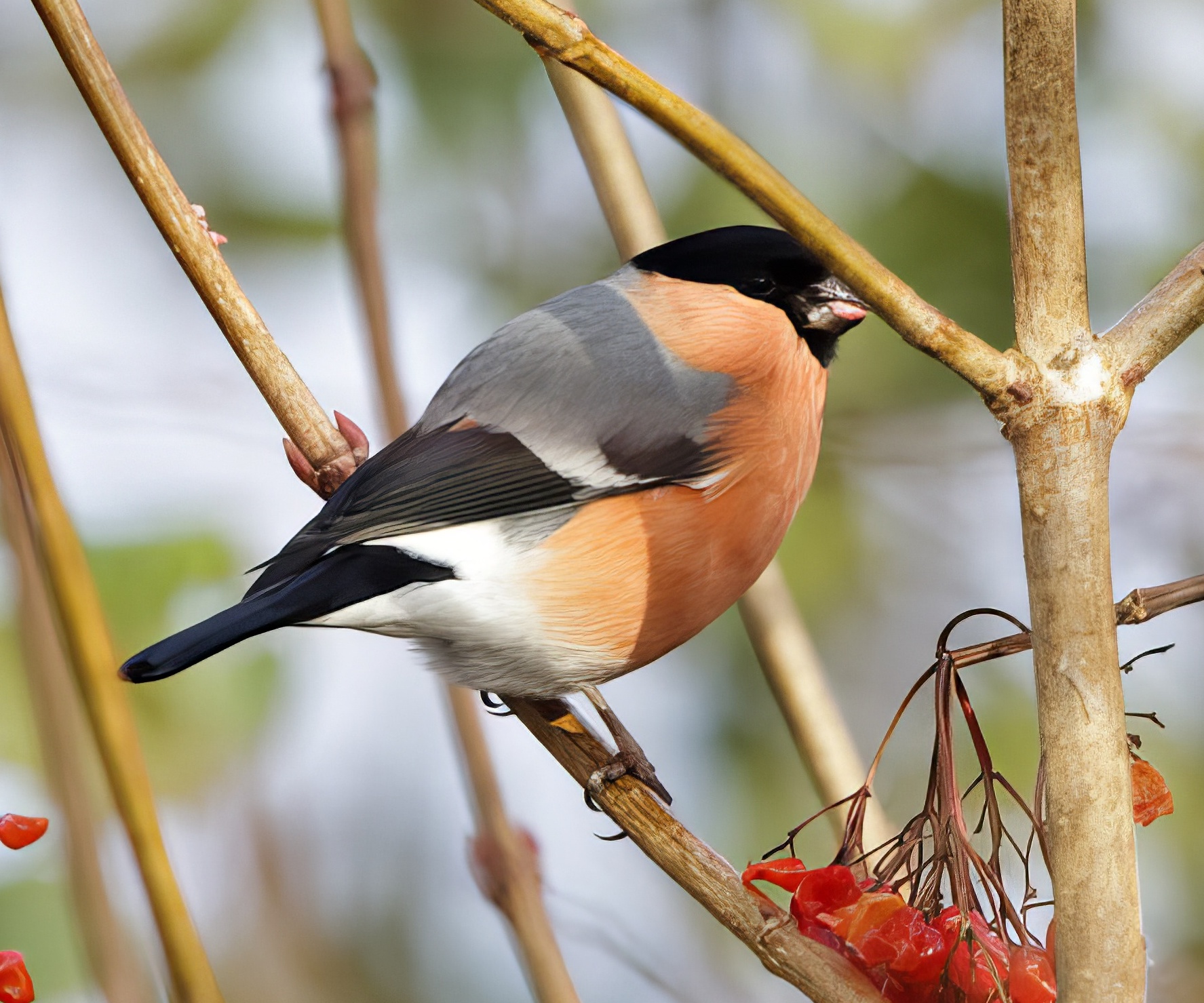Northern Bullfinch Pyrrhula pyrrhula pyrrhula
Nominate Scandinavian form (Northern Bullfinch) a very rare irruptive visitor in autumn and winter.



'Northern' Bullfinches: left, Gibraltar Point October 28th 2003; centre and right, November 27th 2010 (all photos Graham Catley).
The first record of an individual showing characteristics of this sub-specie was of a male at Ponderosa, Donna Nook on October 21st 1990 (G. Catley, H. Bunn et al). Earlier records mentioned in LBR 1978 are now regarded as unreliable and have been removed from the Lincolnshire archive (Catley 1994). The next records were in 1994 when there was an unprecedented arrival on the east coast, including at least 300 on Shetland alone and nearer to home there were 19 at Spurn on October 16th. The total number of individuals recorded up to and including 2017 stands at 19.
The field identification of the northern (nominate) race of Eurasian Bullfinch P. p. pyrrhula is difficult, as there is no single diagnostic feature. Trapped birds though are easily separable using biometrics (particularly wing length). Many birds will give a distinctive call known as the `trumpet call’ but this is not diagnostic of this northern race of Bullfinch, as birds over most of the range of this subspecies give a call hardly distinguishable from that of the race found in Britain P. p. pileata. This distinctive sub-species tends to occur sporadically in the UK from northern Europe and European Russia. See Garner (2010) and van Duivendijk (2011) for a full discussion on identification features.
| Site | First date | Last date | Count | Notes |
| Ponderosa, Donna Nook NNR | 21/10/1990 | - | 1 | Male |
| Ponderosa, Donna Nook NNR | 16/10/1994 | - | 2 | Male and female |
| Ponderosa, Donna Nook NNR | 17/10/1994 | - | 4 | Two males, two females; assumed two of these were present on October 16th |
| Pye's Hall, Donna Nook NNR | 17/10/1994 | - | 1 | Female |
| Saltfleet village | 17/10/1994 | - | 2 | Females |
| Gibraltar Point NNR | 28/10/2003 | - | 1 | Female |
| Gibraltar Point NNR | 30/10/2003 | - | 2 | Females |
| Gibraltar Point NNR | 15/11/2003 | - | 1 | Female |
| Water's Edge CP, Barton upon Humber | 27/11/2010 | - | 2 | Male and female |
| Donna Nook NNR | 24/10/2016 | 25/10/2016 | 1 | Male, trapped on 24th |
| Donna Nook NNR | 29/10/2016 | - | 1 | Male |
| Gibraltar Point NNR | 08/11/2016 | - | 1 | Female |
Ornithological events in 1994: Northern Bullfinches in Lincolnshire
by G. P. Catley.
Note: this article is based on the account which appeared in Lincolnshire Bird Report 1994. The late autumn of 1994 was excellent for eastern vagrants on the coast, but a much more mundane species caught some observers attention: an unprecedented arrival of Northern Bullfinches, nominate race Pyrrhula pyrrhula pyrrhula was noted from the Northern Isles right down the East Coast, providing observers with a real chance to get to grips with this subspecies.
Status
Ten races are generally recognised (nine when this article was published) in the Bullfinch complex with British birds belonging to P. p. pileata. The nominate race breeds from Scandinavia south to southern France, Italy, and the Balkans and east to northern Mongolia, to Kamchatka and south through northern and central Japan.
These irruptive movements usually occur mid-October into November, occasionally into December with onwards movements caused by severe weather or food shortage (Clement et al 1993). Small numbers occur annually in the Northern Isles and less regularly at favoured east coast watch points as far south as Yorkshire where a total of 35 birds were noted at Flamborough Head, 1975-1993 and all between October 8th and November 28th (Newsome, 1994).
The only Lincolnshire records given in Lorand and Atkinson (1989) prior to 1990 were those at two sites on the Humber bank in autumn 1978. As the sole observer of these birds, I now regard them as being inadequately proven and recommend their removal from the Lincolnshire archive. There appear to be no earlier records, so the only (first) record which remains acceptable is of a male at Ponderosa, Donna Nook on October 21st, 1990 (GPC, HB, et al). This bird occurred in the fall which also produced Dusky, Radde’s and Pallas’s Warblers, Olive-backed Pipit, Arctic Redpoll and up to five Parrot Crossbills on the north Lincolnshire coast, and also coincided with a multiple occurrence of P. p. pyrrhula at Flamborough.
The first birds located in 1994 were a male and a female at Ponderosa, Donna Nook on October 16th (HB), when a record total of 19 arrived at Flamborough and at least one at Spurn. Next day, October 17th, there were four at Ponderosa, two males and two females, a further two females at Saltfleet village and a fifth confiding female at Pye’s Hall (GPC) (At Gibraltar Point a party of 2-6 birds present in the Plantation during the second half of October apparently showed characteristics of the nominate race but full descriptions, including any reference to the distinctive calls, are lacking and these are not included in the county archive). It is possible that other birds went unrecorded, especially as October 17th was a Monday, but there were no further Lincolnshire records after this date (in 1994).
This is surprising since the first major arrival on Shetland occurred October 27th-30th and the peak count of 77 on Fair Isle was made o n November 1st. Indeed, it was an outstanding autumn in the Northern Isles with at least 300 birds recorded on Shetland alone and up to seven birds remained there to December with several over-wintering. The ratio of males to females there was 11:3 (Shetland Bird Report, 1994).
Identification
My own notes on the identification of this race are given here for reference. The single most distinctive feature which I noted was their call note. The call did not immediately suggest Bullfinch if the bird was not visible, being so different from the calls of our resident birds. I noted the calls as louder, less nasal, clearer toned and more melodic than the calls of the British pileata: ‘peeoop’. This feature alone renders individuals instantly recognisable as not of the British race.
Size and bulk are notoriously difficult to judge on lone birds, but northern Bullfinches gave me the impression of being large, thick-necked, and stockier than our resident birds. As regards plumage, I found females far more distinctive than males due to the obvious differences in plumage tones, which I noted as a slightly pink-tinged mauve with the only true grey tones on the nape; there was little contrast between the upperparts and underparts. In flight especially, they appeared very pale compared to resident birds. Interestingly the female observed feeding on nettles at close range at Pye’s Hall showed a white wedge at the base of the inner web of one of the outer tail feathers. Males appeared larger, brighter, cleaner birds with a beautiful pale grey mantle and scapulars and with more white on the lower belly.
References
Catley, G.P. (1994). Ornithological events in 1994: northern Bullfinches in Lincolnshire. Lincolnshire Bird Report 1994, 74.
Clement, P., Harris, A., and Davis, J. (1993). Finches and Sparrows: an identification guide. Christopher Helm, A. & C. Black, London.
Garner, M. (2010). Focus On: 'Northern' Bullfinch at https://www.birdguides.com/articles/species-profiles/focus-on-northern-bullfinch/
Newsome, M. (1995). Influx of Northern Bullfinches in October 1994. Flamborough Ornithological Group Bird Report for 1994: 58–60.
Pennington M.G. and Meek E.R. (2006). The ‘Northern Bullfinch’ invasion of autumn 2004. British Birds 99, 2-24.
van Duivendijk, N. (2011). Advanced Bird ID Handbook: the Western Palaearctic. New Holland in conjunction with British Birds. ISBN 978 1 78009 0022 1.
